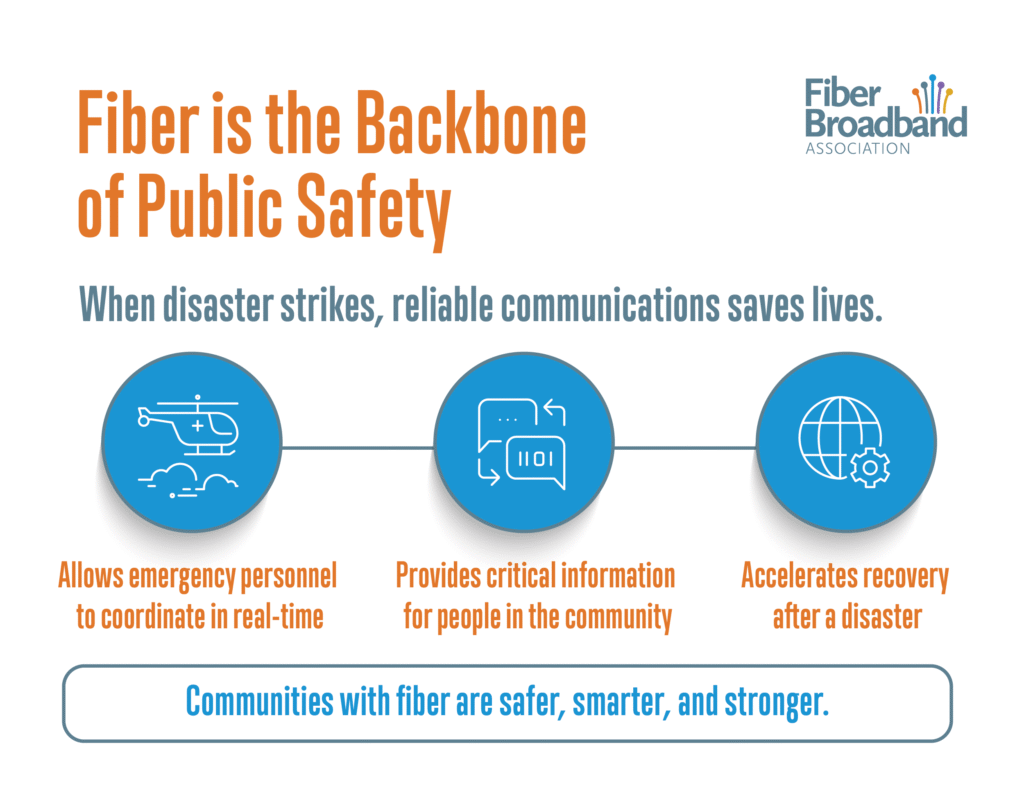Fiber for Public Safety

Reliable communication saves lives. This white paper from the Fiber Broadband Association shows how fiber broadband protects communities by keeping first responders connected before, during, and after disasters.
Across the country, fiber networks have proven essential during crises. From California and Oregon to Hawaii, Tennessee, and Georgia, local providers are using fiber to power fire camps, connect hospitals and command centers, and maintain operations when other systems fail. Fiber broadband delivers the strength, speed, and reliability that temporary or weather-sensitive technologies cannot provide.
As fires, storms, and other natural disasters become more frequent, the need for resilient communications grows even more urgent. Fiber supports real-time emergency mapping, AI-driven fire detection, and instant coordination among fire, police, and medical teams. It is not simply broadband infrastructure but life-saving technology that strengthens public safety and community resilience across the nation.
Whitepaper FAQ’s
1. Why is fiber broadband critical for public safety?
Fiber provides the reliability and performance needed for emergency communications. It allows first responders to coordinate in real time, share data, and stay connected when other systems fail during disasters.
2. How does fiber compare to other communications technologies during emergencies?
Unlike satellite or fixed wireless systems, fiber is less affected by congestion, interference, or weather conditions. It can carry large volumes of data and continue operating under extreme circumstances, ensuring constant communication.
3. What are some real-world examples of fiber improving public safety?
In California, fiber kept wildfire command camps online when satellite systems failed. In Hawaii, underground fiber networks helped reconnect thousands after the Maui fires. In Tennessee, local providers offer free fiber to fire departments, ensuring readiness every day. These examples show how dependable fiber is when communities face disaster.
4. How does fiber help both before and after disasters?
Fiber networks enable real-time monitoring that can detect ground movement, traffic changes, or infrastructure disruptions before emergencies occur. During and after a disaster, the same networks allow responders to coordinate quickly, share information, and accelerate recovery.
5. Why should policymakers make fiber a priority for public safety funding?
Fiber is a long-term investment that supports both public safety and community development. By funding fiber deployment and supporting local providers, policymakers can help ensure reliable communications that save lives and strengthen resilience.
6. What is the main message of this report?
Public safety depends on communications that do not fail. Fiber broadband provides that stability, keeping communities connected, informed, and protected in every stage of a disaster.